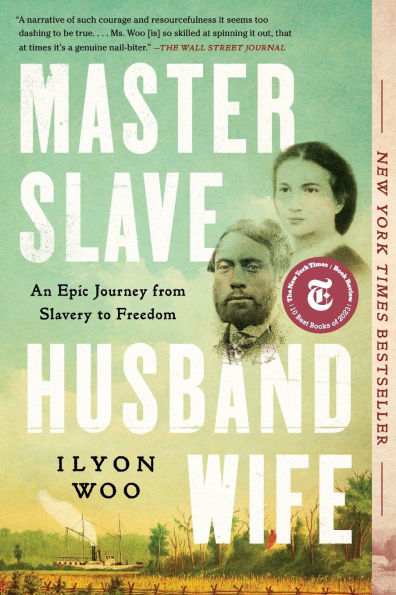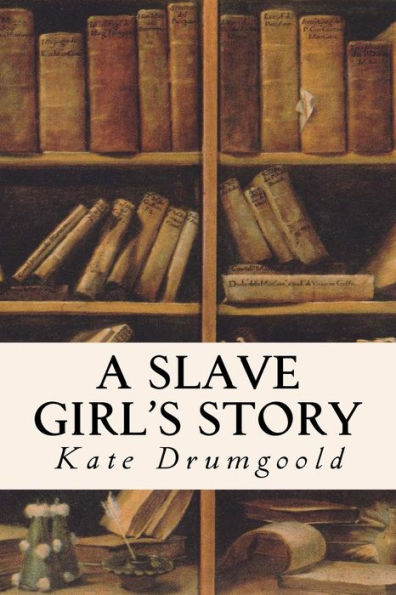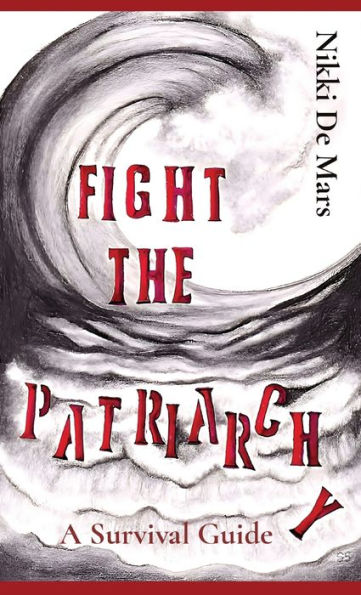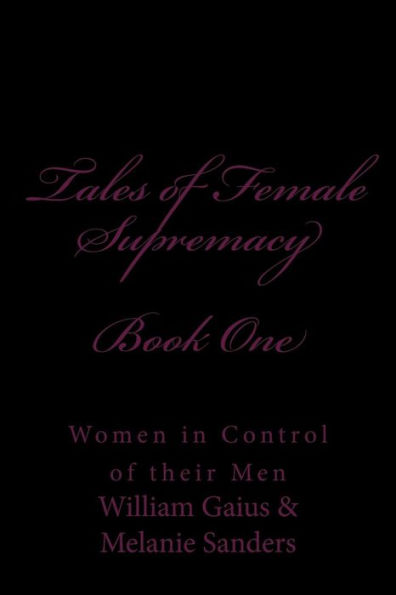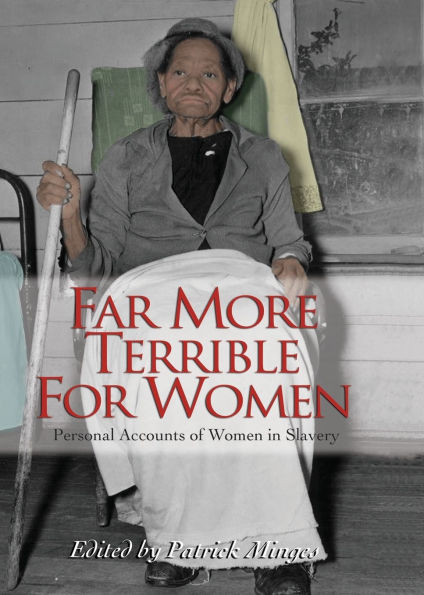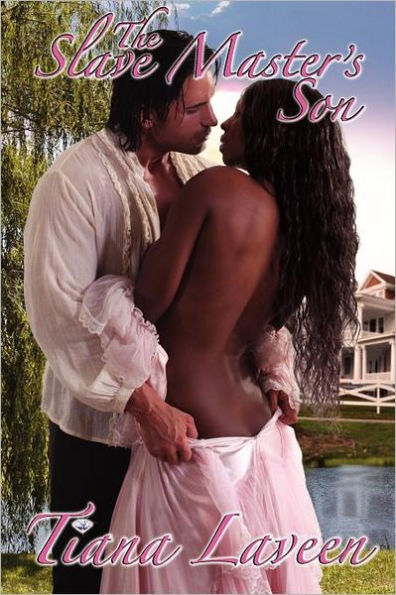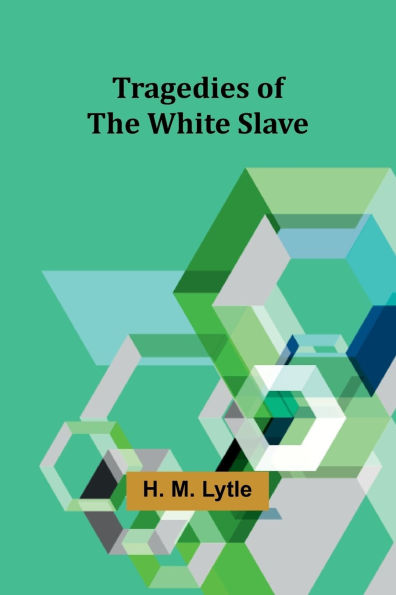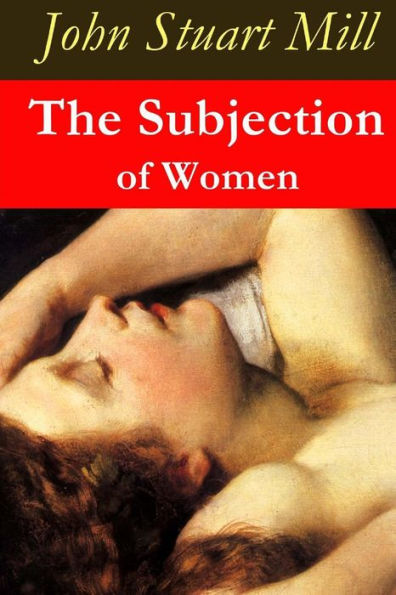Home
Surviving Matriarchy: The Male Slave's Tale
Barnes and Noble
Loading Inventory...
Surviving Matriarchy: The Male Slave's Tale in Franklin, TN
Current price: $14.99
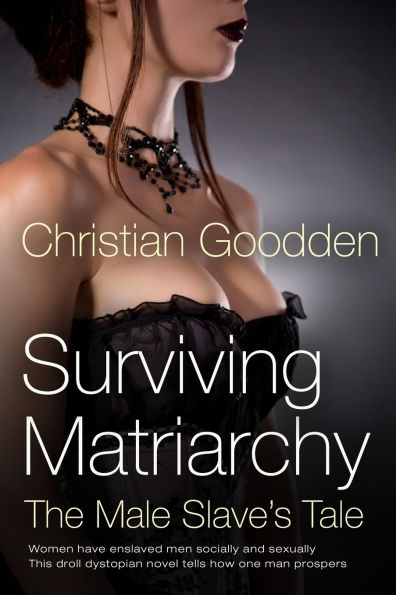
Barnes and Noble
Surviving Matriarchy: The Male Slave's Tale in Franklin, TN
Current price: $14.99
Loading Inventory...
Size: OS
In the realm of Matriarchy the population is overwhelmingly female, and males constitute a tiny minority. Women rule the roost, while men are enslaved socially and sexually. This substantial leftfield novel portrays life, society and culture in the queendom warts and all. It is a leisured utopia for females and demeaning dystopia for males.
The narrator describes what it is like to be a marginalised subjugated exploited man in Matriarchy. Known only by his anonymous slave number, 212, he is an enquiring self-educated character, who puts together a picaresque male slave's tale. At first sight his experiences are harsh, but on closer inspection they prove ambivalent. At the beck and call of alluring imperious mistresses, who reduce their men to being mere trophy boyfriends and sex objects, he and his fellow males are not too despondent. They do not rebel but tolerate their lot.
Rebellion comes from among the matriarchs themselves. Civil war breaks out between their two uppermost classes, the beautiful ruling élite and the intellectual plain-Jane administrative ideologues, who deem themselves undervalued and disrespected. 212 and his illicit girlfriend, Princess Susu, flee for their lives. Leaving Matriarchy behind, they go extraterritorial and blindly adventure for months across the terra incognita of the Empty Quarter, before stumbling upon a bizarre undiscovered pocket of Patriarchy.
In this alien world the exotic refugees prosper and start a family. Susu, after first working as a dominatrix, opens a gallery of contemporary art, while 212 is appointed university lecturer in sociology, rising to become professor. With his unique experience of two disparate realities, he writes best-selling books under the heading of Being and Doing, comparing his old realm of static, tranquil, radiant Matriarchy with frenetic, hard-grafting, macho Patriarchy. Occasionally he and Susu visit their former world. Ultimately they must decide which reality they really want to live in, Matriarchy or Patriarchy.
In this epic fantasy readers can rub shoulders with matriarchal Queen Beatrice, mistress of a harem of male concubines; with closet-gay Louis Meisterwichser, Patriarchy's premier industrial magnate, property baron, and art collector; with hunter-gatherer Dally and dubious rishi Timothy; with ageing socialite Doosra Kydd-Persse, known for her fluting voice and odour of mothballs; with drummer prodigy TT and her matriarchal, power-trio, pop group The Rockettes; with the narrator's former workmates, the waggish muckers; with his long-lost, batty, bag-lady mother, Ballaballa; with sadistic, femme-fatale Lady Chief Justice Didi Thomboei; and with the sexless poker-faced robotic amazons, who police the queendom.
The novel describes boisterous Matriarchs' Day and Queen Bee's Day; the ideologues' grisly male-slave breeding programme; the pretty young 'chaps', whose job it is to chaperone hunky male slaves outside their compound; the growing love between slave 212 and his beautiful mistress Susu; the efforts of a party of radical feminists to emigrate from Patriarchy to Matriarchy; the gender and sexual politics of the two realms; the First and Second Matriarchal Civil Wars; the assassination attempt on the queen and her court; the retro steampunk locomotives shuttling across the Empty Quarter on the new interreality railroad; the Great Railway Disaster; the campus of hocus-pocus in the Empty Quarter; two exhibitions at Susu's gallery of works by the goldsmith Fanny Gugelhupf and the kinetic sculptor Hugo Semmelknödel; the purloining and fencing of the entire Library of Matriarchy; and the wanderings of Boudica's million-pound, Celtic, gold torque.
The tale features preposterous events, wacky characters with outlandish names, sparkling dialogue, and some raunchy passages. The writing is humorous, tongue-in-cheek, stylish, linguistically playful, thoughtful, and provocative.
The narrator describes what it is like to be a marginalised subjugated exploited man in Matriarchy. Known only by his anonymous slave number, 212, he is an enquiring self-educated character, who puts together a picaresque male slave's tale. At first sight his experiences are harsh, but on closer inspection they prove ambivalent. At the beck and call of alluring imperious mistresses, who reduce their men to being mere trophy boyfriends and sex objects, he and his fellow males are not too despondent. They do not rebel but tolerate their lot.
Rebellion comes from among the matriarchs themselves. Civil war breaks out between their two uppermost classes, the beautiful ruling élite and the intellectual plain-Jane administrative ideologues, who deem themselves undervalued and disrespected. 212 and his illicit girlfriend, Princess Susu, flee for their lives. Leaving Matriarchy behind, they go extraterritorial and blindly adventure for months across the terra incognita of the Empty Quarter, before stumbling upon a bizarre undiscovered pocket of Patriarchy.
In this alien world the exotic refugees prosper and start a family. Susu, after first working as a dominatrix, opens a gallery of contemporary art, while 212 is appointed university lecturer in sociology, rising to become professor. With his unique experience of two disparate realities, he writes best-selling books under the heading of Being and Doing, comparing his old realm of static, tranquil, radiant Matriarchy with frenetic, hard-grafting, macho Patriarchy. Occasionally he and Susu visit their former world. Ultimately they must decide which reality they really want to live in, Matriarchy or Patriarchy.
In this epic fantasy readers can rub shoulders with matriarchal Queen Beatrice, mistress of a harem of male concubines; with closet-gay Louis Meisterwichser, Patriarchy's premier industrial magnate, property baron, and art collector; with hunter-gatherer Dally and dubious rishi Timothy; with ageing socialite Doosra Kydd-Persse, known for her fluting voice and odour of mothballs; with drummer prodigy TT and her matriarchal, power-trio, pop group The Rockettes; with the narrator's former workmates, the waggish muckers; with his long-lost, batty, bag-lady mother, Ballaballa; with sadistic, femme-fatale Lady Chief Justice Didi Thomboei; and with the sexless poker-faced robotic amazons, who police the queendom.
The novel describes boisterous Matriarchs' Day and Queen Bee's Day; the ideologues' grisly male-slave breeding programme; the pretty young 'chaps', whose job it is to chaperone hunky male slaves outside their compound; the growing love between slave 212 and his beautiful mistress Susu; the efforts of a party of radical feminists to emigrate from Patriarchy to Matriarchy; the gender and sexual politics of the two realms; the First and Second Matriarchal Civil Wars; the assassination attempt on the queen and her court; the retro steampunk locomotives shuttling across the Empty Quarter on the new interreality railroad; the Great Railway Disaster; the campus of hocus-pocus in the Empty Quarter; two exhibitions at Susu's gallery of works by the goldsmith Fanny Gugelhupf and the kinetic sculptor Hugo Semmelknödel; the purloining and fencing of the entire Library of Matriarchy; and the wanderings of Boudica's million-pound, Celtic, gold torque.
The tale features preposterous events, wacky characters with outlandish names, sparkling dialogue, and some raunchy passages. The writing is humorous, tongue-in-cheek, stylish, linguistically playful, thoughtful, and provocative.
In the realm of Matriarchy the population is overwhelmingly female, and males constitute a tiny minority. Women rule the roost, while men are enslaved socially and sexually. This substantial leftfield novel portrays life, society and culture in the queendom warts and all. It is a leisured utopia for females and demeaning dystopia for males.
The narrator describes what it is like to be a marginalised subjugated exploited man in Matriarchy. Known only by his anonymous slave number, 212, he is an enquiring self-educated character, who puts together a picaresque male slave's tale. At first sight his experiences are harsh, but on closer inspection they prove ambivalent. At the beck and call of alluring imperious mistresses, who reduce their men to being mere trophy boyfriends and sex objects, he and his fellow males are not too despondent. They do not rebel but tolerate their lot.
Rebellion comes from among the matriarchs themselves. Civil war breaks out between their two uppermost classes, the beautiful ruling élite and the intellectual plain-Jane administrative ideologues, who deem themselves undervalued and disrespected. 212 and his illicit girlfriend, Princess Susu, flee for their lives. Leaving Matriarchy behind, they go extraterritorial and blindly adventure for months across the terra incognita of the Empty Quarter, before stumbling upon a bizarre undiscovered pocket of Patriarchy.
In this alien world the exotic refugees prosper and start a family. Susu, after first working as a dominatrix, opens a gallery of contemporary art, while 212 is appointed university lecturer in sociology, rising to become professor. With his unique experience of two disparate realities, he writes best-selling books under the heading of Being and Doing, comparing his old realm of static, tranquil, radiant Matriarchy with frenetic, hard-grafting, macho Patriarchy. Occasionally he and Susu visit their former world. Ultimately they must decide which reality they really want to live in, Matriarchy or Patriarchy.
In this epic fantasy readers can rub shoulders with matriarchal Queen Beatrice, mistress of a harem of male concubines; with closet-gay Louis Meisterwichser, Patriarchy's premier industrial magnate, property baron, and art collector; with hunter-gatherer Dally and dubious rishi Timothy; with ageing socialite Doosra Kydd-Persse, known for her fluting voice and odour of mothballs; with drummer prodigy TT and her matriarchal, power-trio, pop group The Rockettes; with the narrator's former workmates, the waggish muckers; with his long-lost, batty, bag-lady mother, Ballaballa; with sadistic, femme-fatale Lady Chief Justice Didi Thomboei; and with the sexless poker-faced robotic amazons, who police the queendom.
The novel describes boisterous Matriarchs' Day and Queen Bee's Day; the ideologues' grisly male-slave breeding programme; the pretty young 'chaps', whose job it is to chaperone hunky male slaves outside their compound; the growing love between slave 212 and his beautiful mistress Susu; the efforts of a party of radical feminists to emigrate from Patriarchy to Matriarchy; the gender and sexual politics of the two realms; the First and Second Matriarchal Civil Wars; the assassination attempt on the queen and her court; the retro steampunk locomotives shuttling across the Empty Quarter on the new interreality railroad; the Great Railway Disaster; the campus of hocus-pocus in the Empty Quarter; two exhibitions at Susu's gallery of works by the goldsmith Fanny Gugelhupf and the kinetic sculptor Hugo Semmelknödel; the purloining and fencing of the entire Library of Matriarchy; and the wanderings of Boudica's million-pound, Celtic, gold torque.
The tale features preposterous events, wacky characters with outlandish names, sparkling dialogue, and some raunchy passages. The writing is humorous, tongue-in-cheek, stylish, linguistically playful, thoughtful, and provocative.
The narrator describes what it is like to be a marginalised subjugated exploited man in Matriarchy. Known only by his anonymous slave number, 212, he is an enquiring self-educated character, who puts together a picaresque male slave's tale. At first sight his experiences are harsh, but on closer inspection they prove ambivalent. At the beck and call of alluring imperious mistresses, who reduce their men to being mere trophy boyfriends and sex objects, he and his fellow males are not too despondent. They do not rebel but tolerate their lot.
Rebellion comes from among the matriarchs themselves. Civil war breaks out between their two uppermost classes, the beautiful ruling élite and the intellectual plain-Jane administrative ideologues, who deem themselves undervalued and disrespected. 212 and his illicit girlfriend, Princess Susu, flee for their lives. Leaving Matriarchy behind, they go extraterritorial and blindly adventure for months across the terra incognita of the Empty Quarter, before stumbling upon a bizarre undiscovered pocket of Patriarchy.
In this alien world the exotic refugees prosper and start a family. Susu, after first working as a dominatrix, opens a gallery of contemporary art, while 212 is appointed university lecturer in sociology, rising to become professor. With his unique experience of two disparate realities, he writes best-selling books under the heading of Being and Doing, comparing his old realm of static, tranquil, radiant Matriarchy with frenetic, hard-grafting, macho Patriarchy. Occasionally he and Susu visit their former world. Ultimately they must decide which reality they really want to live in, Matriarchy or Patriarchy.
In this epic fantasy readers can rub shoulders with matriarchal Queen Beatrice, mistress of a harem of male concubines; with closet-gay Louis Meisterwichser, Patriarchy's premier industrial magnate, property baron, and art collector; with hunter-gatherer Dally and dubious rishi Timothy; with ageing socialite Doosra Kydd-Persse, known for her fluting voice and odour of mothballs; with drummer prodigy TT and her matriarchal, power-trio, pop group The Rockettes; with the narrator's former workmates, the waggish muckers; with his long-lost, batty, bag-lady mother, Ballaballa; with sadistic, femme-fatale Lady Chief Justice Didi Thomboei; and with the sexless poker-faced robotic amazons, who police the queendom.
The novel describes boisterous Matriarchs' Day and Queen Bee's Day; the ideologues' grisly male-slave breeding programme; the pretty young 'chaps', whose job it is to chaperone hunky male slaves outside their compound; the growing love between slave 212 and his beautiful mistress Susu; the efforts of a party of radical feminists to emigrate from Patriarchy to Matriarchy; the gender and sexual politics of the two realms; the First and Second Matriarchal Civil Wars; the assassination attempt on the queen and her court; the retro steampunk locomotives shuttling across the Empty Quarter on the new interreality railroad; the Great Railway Disaster; the campus of hocus-pocus in the Empty Quarter; two exhibitions at Susu's gallery of works by the goldsmith Fanny Gugelhupf and the kinetic sculptor Hugo Semmelknödel; the purloining and fencing of the entire Library of Matriarchy; and the wanderings of Boudica's million-pound, Celtic, gold torque.
The tale features preposterous events, wacky characters with outlandish names, sparkling dialogue, and some raunchy passages. The writing is humorous, tongue-in-cheek, stylish, linguistically playful, thoughtful, and provocative.
